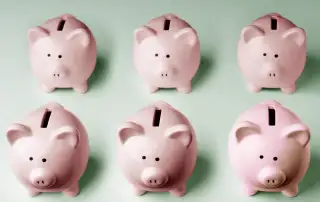3 Things to Know About Obama's New MyRa Retirement Plan

The federal government today launched a program called myRA, a “starter” retirement savings account for people who don’t have access to a 401(k) at work or don’t have enough money to meet the minimum balance requirements on many private-sector IRA accounts.
In his announcement, Treasury Secretary Jacob J. Lew touted it as a cheap, convenient, and risk-free way for people who otherwise wouldn't be able to sock some money away for their retirements.
Government statistics show that nearly a third of people who aren’t already retired say they don’t have any money set aside through a pension, 401(k) or other retirement account. More than 40% of people who don’t have a 401(k) say it’s because their job doesn’t offer one, and more than 60% of part-time workers don’t have employer-backed retirement accounts.
Here's what you need to know:
It's really just a starter account. MyRA isn't meant to be a stand-alone retirement plan. There's only one investment option—a Treasury bond that recently earned about 2%. That’s more than a typical savings account, but it’s not the kind of return investment experts say people need to accumulate a good-sized nest egg. The trade-off is that it’s principal-protected (you can’t lose the money you put in) since the money is invested in a government security.
There are no fees, and no minimum balance or contribution requirements, which Treasury officials said are major barriers to people who want to start retirement accounts.
It's structured much like a Roth IRA. You put in the money after tax, so your account grows tax-free after that. There are income maximums: $131,000 a year for single tax filers, and $193,000 for married couples who file jointly. You can donate up to $5,500 annually, or $6,500 if you’re over 50 or will turn 50 before the end of the year, and you can withdraw the money you put in (although not earnings) without a penalty at any time.
You can make a one-time contribution like a tax refund or a lump sum from a savings account, have regular contributions added through their employer’s direct deposit, or a combination of the two. Contributions are made with after-tax dollars, but you won’t have to pay taxes on investment earnings or on withdrawal.
It has a relatively low maximum for savings. You can save up to $15,000 in a myRA account. Treasury officials said Wednesday the cap is because the program is intended to be “a bridge to private sector savings.” By the time you’ve accumulated that amount, you’ll be in a better position to roll it over into another account because you’ll easily meet the minimum balance threshold.
Although there’s no rule that says you can’t open a myRA account if your employer offers a retirement plan, Treasury officials stress that it’s better to invest in an employer plan, especially if your job matches a certain amount of contributions.
The site myRA.gov has more details along with sign-up information.
Read next: How to Save a Less-Than-Perfect Retirement